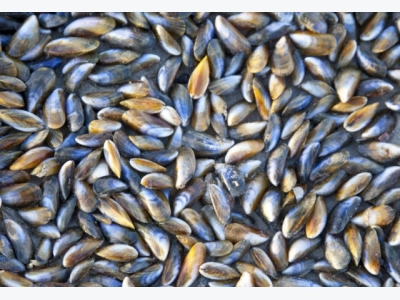Aquacultures global potential revealed

Nearly every coastal country has the potential to meet its own domestic seafood needs through aquaculture. according to a recent report from marine scientists at the University of California Santa Barbara (UCSB).
The report, which includes input from researchers from the Nature Conservancy, Imperial College London, UCLA and the National Oceanic and Atmospheric Administration, and was published in the journal Nature Ecology and Evolution in August, demonstrates the oceans’ potential to support aquaculture.
“There is a lot of space that is suitable for aquaculture, and that is not what’s going to limit its development,” said lead author Rebecca Gentry, who recently completed her PhD at UCSB’s Bren School of Environmental Science & Management. “It’s going to be other things such as governance and economics.”
According to the study, among the first global assessments of the potential for marine aquaculture, the world’s oceans are rife with aquaculture ‘hot spots’ – such as parts of central Indonesia, Fiji and Kenya – that provide enough space to produce 15 billion metric tons of finfish annually. That is more than 100 times the current global seafood consumption.
More realistically, the researchers note, if aquaculture were developed in only the most productive areas, the oceans could theoretically produce the same amount of seafood that the world’s wild-caught fisheries currently produce globally, but in less than 1 percent of the total ocean surface – a combined area the size of Lake Michigan.
“There are only a couple of countries that are producing the vast majority of what’s being produced right now in the oceans,” Gentry said. “We show that aquaculture could actually be spread a lot more across the world, and every coastal country has this opportunity.”
The United States, for example, has enormous untapped potential and could produce enough farmed seafood to meet national demand using only 0.01 percent of its exclusive economic zone, Gentry noted. Given that the US imports more than 90 percent of its seafood, aquaculture presents a powerful opportunity to increase domestic supply and reduce the nation’s seafood trade deficit, which now totals over $13 billion.
More realistically, the researchers note, if aquaculture were developed in only the most productive areas, the oceans could theoretically produce the same amount of seafood that the world’s wild-caught fisheries currently produce globally, but in less than 1 percent of the total ocean surface
“Marine aquaculture provides a means and an opportunity to support both human livelihoods and economic growth, in addition to providing food security,” said co-author Ben Halpern, executive director of the UCSB-affiliated National Center for Ecological Analysis and Synthesis (NCEAS). “It’s not a question of if aquaculture will be part of future food production but, instead, where and when. Our results help guide that trajectory.”
To determine aquaculture’s global potential, the researchers identified areas where ocean conditions are suitable enough to support farms. They used synthesized data on oceanographic parameters like ocean depth and temperature and the biological needs of 180 species of finfish and bivalve molluscs, such as oysters and mussels.
The research team ruled out places that would come into conflict with other human uses, such as high shipping zones and marine protected areas, and excluded ocean depths that exceed 200 metres, following current industry practice to keep their assessment economically realistic. Their analysis did not consider all possible political or social constraints that may limit production.
“There’s so much area available that there’s a lot of flexibility to think about how to do this in the best way for conservation, economic development and other uses,” said Gentry.
Co-author Halley Froehlich noted that aquaculture could also help make up for the limitations of wild-caught fisheries. In the past two decades, the wild-caught industry has hit a production wall, stagnating at about 90 million metric tons, with little evidence that things will pick up.
“Aquaculture is expected to increase by 39 percent in the next decade,” said Froehlich, a postdoctoral researcher at NCEAS. “Not only is this growth rate fast, but the amount of biomass aquaculture produces has already surpassed wild seafood catches and beef production.”
Froehlich emphasized that it will be crucial for science, conservation, policy and industry to work together to proactively ensure fish farms are not just well placed but also well managed, such as balancing nutrient inputs and outputs to avoid pollution and monitoring for diseases. This study is a step in that collaborative direction.
“Like any food system, aquaculture can be done poorly; we’ve seen it,” she said, referring to the boom and bust of shrimp farming in the 1990s, a fallout of poor management. “This is really an opportunity to shape the future of food for the betterment of people and the environment.”
Có thể bạn quan tâm
Phần mềm

Phối trộn thức ăn chăn nuôi

Pha dung dịch thủy canh

Định mức cho tôm ăn

Phối trộn phân bón NPK

Xác định tỷ lệ tôm sống

Chuyển đổi đơn vị phân bón

Xác định công suất sục khí

Chuyển đổi đơn vị tôm

Tính diện tích nhà kính

Tính thể tích ao hồ




 Does aquaculture impact wild fish quality?
Does aquaculture impact wild fish quality?  VASEP highlights risk of IUU fishing
VASEP highlights risk of IUU fishing